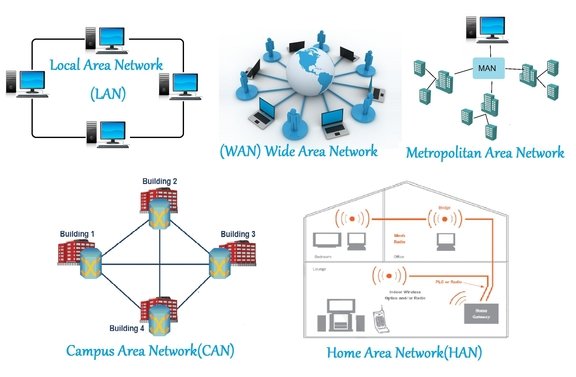Back to: COMPUTER SCIENCE SS3
Welcome to class!
In today’s class, we will be talking about networking. Enjoy the class!
Networking

Contents:
- Definition of Networking
- Types of Networking
Networking
Networking is the construction, design, and use of a network, including the physical (cabling, hub, bridge, switch, router, and so forth), the selection and use of telecommunication protocol and computer software for using and managing the network, and the establishment of operation policies and procedures related to the network.
A computer network can be defined as a collection of interconnected computers in such a way that they share resources. A computer system only referred to a group of the computers and hardware components interconnected by communicating channels that allow sharing of resources and information. It is the practice of interfacing two or more computing devices with each other to share data. Computer networks are built with a combination of hardware and software. Technically, If at least one process in one computer can send or receive data to/from at least one process residing on a remote computer, then two machines are said to be a network.
A computer network is a set of connected computers. Computers on a network are called nodes. The connection between computers can be done via cabling, most commonly the Ethernet cable, or wirelessly through radio waves. Connected computers can share resources, like access to the Internet, printers, file servers, and others. A network is a multipurpose connection, which allows a single computer to do more.
It is this network that evolved to become what we now call the internet.
Networks are used to:
- Facilitate communication via email, video conferencing, instant messaging, etc.
- Enable multiple users to share a single hardware device like a printer or scanner
- Enable file sharing across the network
- Allow for the sharing of software or operating programs on remote systems
- Make information easier to access and maintain among network users
Types of networks
There are many types of networks, including:
- Local Area Networks (LAN)
- Personal Area Networks (PAN)
- Home Area Networks (HAN)
- Wide Area Networks (WAN)
- Campus Networks
- Metropolitan Area Networks (MAN)
- Enterprise Private Networks
- Internetworks
- Backbone Networks (BBN)
- Global Area Networks (GAN)
- The Internet

There are several different types of computer networks. Computer networks can be characterized by their size as well as their purpose.
The size of a network can be expressed by the geographic area they occupy and the number of computers that are part of the network. Networks can cover anything from a handful of devices within a single room to millions of devices spread across the entire globe
Some of the different networks based on size are:
- Personal area network, or PAN
- Local area network, or LAN
- Metropolitan area network, or MAN
- Wide area network, or WAN
In terms of purpose, many networks can be considered general-purpose, which means they are used for everything from sending files to a printer to accessing the Internet. Some types of networks, however, serve a very particular purpose. Some of the different networks based on their main purpose are:
- Storage area network, or SAN
- Enterprise private network, or EPN
- A virtual private network, or VPN
Evaluation
- Define networking
- Define computer network
- What are networks used for?
- List 6 types of network
- List the types of network based on their main purpose.
- List the types of network based on their size.
In our next class, we will be talking about Network Cables and Connectors. We hope you enjoyed the class.
Should you have any further question, feel free to ask in the comment section below and trust us to respond as soon as possible.

Thanks for this site.
But enrolling monthly for a class covers how many topics?
I await your response.
Thank you very much for this lesson but how about the definitions or explanations of this various types of networks.
I really appreciate your help but what about the other classes
I have learnt a lot
Glad you found it helpful😊 For even more class notes, engaging videos, and homework assistance, just download our Mobile App at https://play.google.com/store/apps/details?id=com.afrilearn. It’s packed with resources to help you succeed🌟
how can I download some notes from your page?
Glad you found it helpful😊 For even more class notes, engaging videos, and homework assistance, just download our Mobile App at https://play.google.com/store/apps/details?id=com.afrilearn. It’s packed with resources to help you succeed🌟
Hi, How can I have full access to these notes (COMPUTER STUDIES SSS 1- 3 FIRST- THIRD TERM)??